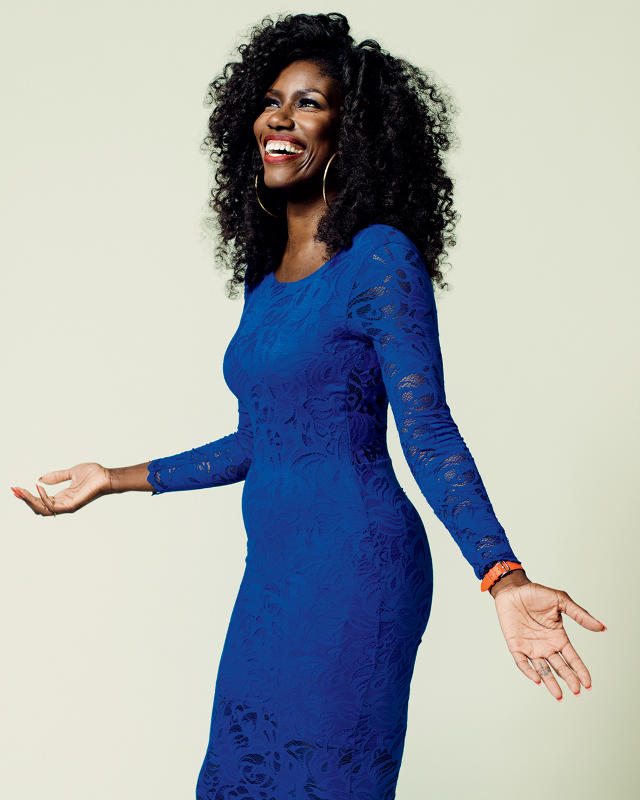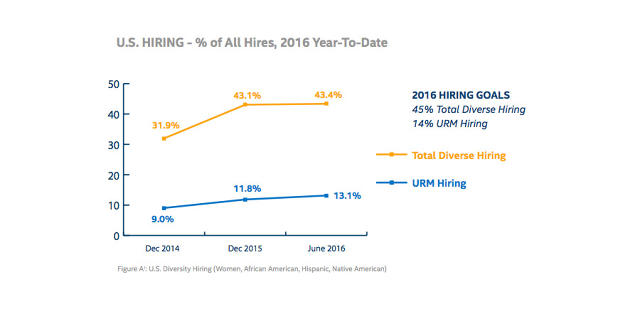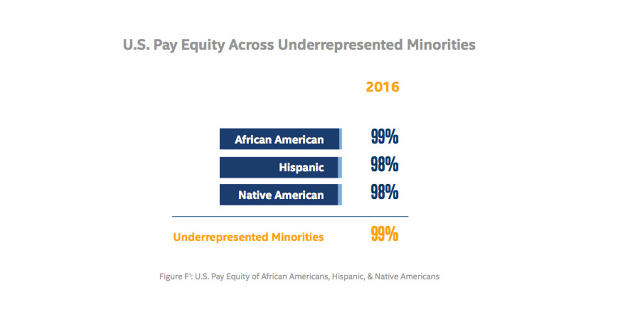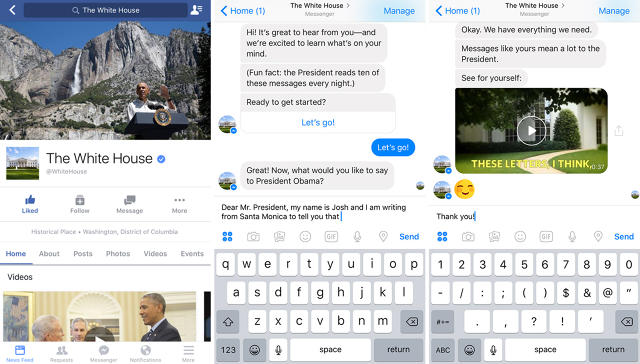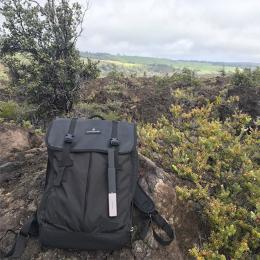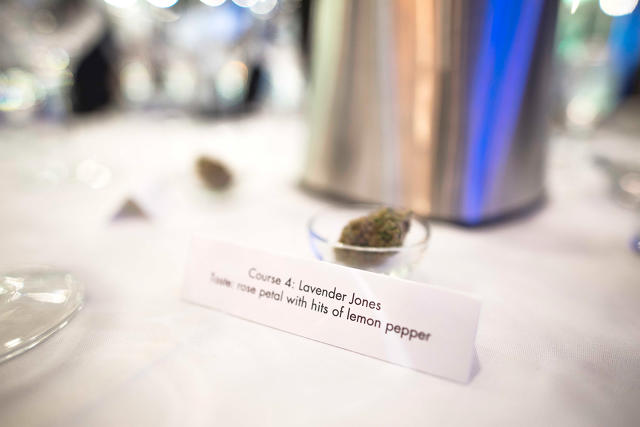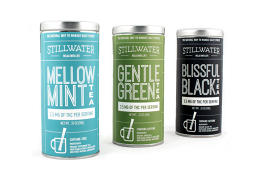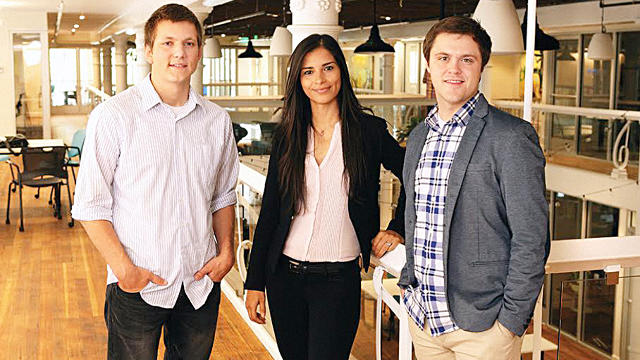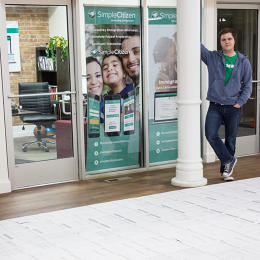iPhone sales have slumped, stock is down, and pundits insist Apple is a tech laggard. But the company may be stronger than ever.
Eddy Cue doesn't look like a man in the midst of his toughest year in decades. Sporting an untucked apricot camp shirt and blue jeans over camouflage socks and a pair of blue leather racing shoes from Germany, Apple's SVP of Internet software and services pulls up a chair at one of the marble-topped tables outside Caffé Macs, the employee restaurant at the heart of Apple's 23-year-old Cupertino campus. (The company will begin to move into its new "spaceship" HQ next year.) Cue dives right into telling me about his latest horror story:
The collapse, two nights earlier, of his beloved Golden State Warriors in the NBA Finals, which Cue had the dismal pleasure of observing from a courtside seat. "Am I in mourning?" he asks of his team's loss to LeBron James's Cleveland Cavaliers. "You better believe it. I'm not watching ESPN, I haven't gotten onto a sports website, I haven't read a newspaper. When I turn on my TV, I only go to the DVR."
"Eddy, this is on the record," warns Craig Federighi, Apple's SVP of software engineering, from across the table.
"I've got no problem with that," replies Cue, who is such a Warriors fan that he was featured on the front page of the San Francisco Chronicle after the team's comeback victory in the conference finals a few weeks earlier, in a photo that showed him screaming in red-faced celebration along with Stephen Curry. He leans over my iPhone, which is recording the interview, and enunciates his next three words to make sure they are loud and clear. "I love LeBron!" Then he gives way to a set of hearty and rueful guffaws.
It's 62 degrees in Cupertino, the sun is shining, the smell of cumin and garlic from the café's chicken masala special fills the air, and the chatter among the couple hundred employees enjoying their lunch seems lively and bright. Nowhere is there any hint that "Apple is doomed," as suggested by Forbes and other outlets, or that it is engaged in a "user-hostile and stupid" campaign against its customers (The Verge), led by CEO Tim Cook, a "boring old fart . . . a supply-chain supplicant" (culture critic Bob Lefsetz).
Under Cook's leadership, Apple has come to seem quite fallible to many people. Its recent products have seemed far less than perfect, at least compared to the collective memory of its astonishing iPod–iPhone–iPad run from 2001 to 2010. There are the public embarrassments, like its 2012 introduction of Maps, or those 2014 videos of reviewers bending, and breaking, an iPhone 6 Plus. Apple Pay hasn't become the standard for a cashless society, and the Apple Watch "is not the watch we expect from Apple," according to John Gruber, editor of Daring Fireball, the preeminent Apple-centric website. Then there are the design flaws: Apple Music has been saddled with too many features, as if it were something designed by, God forbid, Microsoft; the lens on the back of the iPhone 6 extrudes; the new Apple TV has an illogical interface and confusing remote control.
Perhaps, say the worriers, Apple is doing too many things at once, cranking out multiple editions of the watch, endless varieties of watchbands, iPhones, and iPads in numerous sizes, proprietary earbuds alongside headphones from Beats. Credible reports that the company is spending billions of dollars in R&D to explore the possibility of designing a car only heighten the fear that Apple is spread too thin. Steve Jobs had been the company's editor, proud of saying no to features, products, business ideas, and new hires far more often than he said yes. Apple's seemingly diffuse product line reinforces the argument that Cook is not as rigorous. (The fear has a worrisome precedent: During the early and mid-1990s, Apple's product line was a mess of marketing-inspired offerings, and both its reputation as a unique manufacturer and its business suffered.)
The criticism crescendoed last April, after Cook announced that, for the first time in 13 years, Apple's revenue had decreased by 13%, from the corresponding quarter a year earlier. Sales of iPhones had slowed even more, off 16%, an alarming development given that the smartphone accounts for 65% of the company's total revenue.
Meanwhile, the company's competitors seem to be jetting ahead. Amazon, Facebook, Google, and Microsoft have dazzled the press with announcements of upcoming products that will use artificial intelligence, or AI. Some, like Microsoft's Cortana, are software applications that promise to anticipate customers' needs in useful, personalized ways. Others are already packaging that ability in hardware; in less than two years, Amazon has sold more than 3 million Echos, its $199 canister that's a voice-controlled personal assistant. Google revealed plans for a similar product, Home, in May, to much fanfare. Critics look at Apple's five-year-old Siri, its voice-controlled agent, and cavil that the company has nothing as flashy to reveal.
So, is Apple doomed? Of course not. As John Gruber says, "Any conversation that uses that word is in silly la-la land." With Macs, iPads, and software applications and services, Apple isn't a one-trick pony like BlackBerry, to use an example cited by those most freaked out about the recent iPhone slowdown. It recorded $50.6 billion in sales during that "disappointing" quarter, more than the combined revenue of Google parent Alphabet ($20.3 billion) and Amazon ($29.1 billion) over the same period. Its $10.5 billion in profits outpaced not just the combination of Alphabet ($4.2 billion) and Amazon ($513 million) but also Facebook ($1.5 billion) and Microsoft ($3.8 billion).
"I don't read all the coverage on Apple that there is," Cook tells me a few days after my lunch with Cue and Federighi. "The way that I look at that is, I really know the truth." And he's ready to talk about it.
Traditionally, Apple execs give interviews only when the company has a new product to hawk. Often, Jobs would only cooperate with magazines that promised to photograph him alongside one of the company's devices. But change is afoot at Apple, and not just in the communications department. Apple has embarked on a mission to improve its four operating systems (for Apple TV, iPhone, Mac, and the watch), services like Apple Pay and Apple Music, and even the size of the iMessage bubble on your iPhone screen. It has redesigned the layout of its retail stores and its online App Store. It is making radical changes to maligned offerings like Maps, Siri, and the watch. It is wooing app developers in brand-new ways, knowing that their creativity is what enriches the $250-billion-per-year ecosystem that has been built on Apple devices. It is almost certainly exploring the possibility of manufacturing a car. These moves are the building blocks for the newest iteration of Apple.
Apple's future may look very different from its past, and Cook, Federighi, and Cue wouldn't have it any other way. "Look," says Cue, who somehow manages to look both like a man who just woke up and a compact ball of perpetual energy, "one thing you know if you've been in technology a while, you're only as good as the last thing you did. No one wants an original iPod. No one wants an iPhone 3GS."
Apple executives are careful to avoid suggesting that the company is moving beyond its founder's vision, but that's exactly what's happening in Cupertino. It's a subtle, evolutionary change. Cook is pushing Apple into a future that is bigger and broader than anything Jobs could effect during his too-short life. "I want Apple to be here, you know, forever," he says.
Those lulled by last spring's bad news into dismissing Cook and his team are likely to miss the scope of the company's ambitions and its progress in achieving them. While Amazon, Facebook, and Google may crow loudest about their bold ideas, Apple may well have the biggest role in actually defining our technological future.
Overheard During The Apple Freak-Out
Real reactions, culled from the tech commentariat, to Apple's tumultuous 2016. The Apple faithful have never been more polarized.

"Do you have more flaws than you used to?"
"Do I personally have more flaws than I used to?" Tim Cook laughs as he responds to my poorly phrased question. "I've always had flaws. Always!"
"Now we're getting where I wanted to go!" I tell him. "You can lie down for the rest of the interview."
Cook remains in an upright position, and when his chuckles subside, he answers the question I intended to ask. "Is Apple making more mistakes than we used to? I don't have a tracker on that." Cook, despite a job that's become more challenging during his five years as CEO, doesn't seem to have aged a whit. Having your company lose $180 billion in market value (which Apple has in the 17 months since I last interviewed Cook) should manifest itself in some way, but he is still trim and fit, his eyes lively, his good humor intact. "We have never said that we're perfect," he continues. "We've said that we seek that. But we sometimes fall short."
Indeed, the iPod, iPhone, and iPad—and the financial success they engendered—obscured the fact that Jobs oversaw almost as many flops as hits during Apple's resurgence: the circular, nearly unusable mouse that came with the first iMac in 1997; 2001's beautiful PowerMac G4 "Cube," which was discontinued after one year; Rokr, a music phone Apple released with Motorola in 2005; the iTunes social recommendation network Ping, and many more.
"The most important thing is, Do you have the courage to admit that you're wrong? And do you change?" Cook says. "The most important thing to me as a CEO is that we keep the courage."
Gadflies who scorn Cook's Apple for its imperfections also scold the company for being "behind" in whatever is the technology du jour. This is nothing new. "What tends to happen with Apple, not just today but in the 18 years I've been here," says Cook, "is that invariably some people compare what we're doing now to a vision or a product that somebody says they will create in the future."
Over its 40 years of existence, Apple has been seen as a laggard in music, video, the Internet, telephony, wireless, content creation, networking, semiconductors, software applications, touch screens, gesture controls, materials, messaging, news aggregation, social media, voice recognition, and mapping. (That's not even close to being an exhaustive list.) Nevertheless, the company has managed to survive by doing an unmatched job of integrating the most important of those technologies into products that eventually delight many customers. By the time Jobs died, Apple's innovation process—the way it accomplishes that job of creating, acquiring, improving, and integrating technology—was polished and proven. It was arguably Jobs's greatest gift to his successor.
Cook has built on that gift in a way that suits him. Apple's CEO is a deeply grounded man who has not been blinded by Jobs's brilliant legacy. Jobs only came to appreciate the incremental nature of innovation during the second half of his life; you get the sense that Cook understood and loved process from birth. This focus on detail is often mentioned as a weakness. But, in the five years under Cook, Apple's revenue has tripled, its workforce has doubled, and its global reach has expanded rapidly. That's a remarkable record. Cook has shown a great capacity for getting improvements from every corner of the company, and for then deploying those gains across a wider canvas of software, hardware, and services than Jobs ever had at his disposal. He will never be as flashy as Jobs, but he may just be the perfect CEO for the behemoth Apple has become.
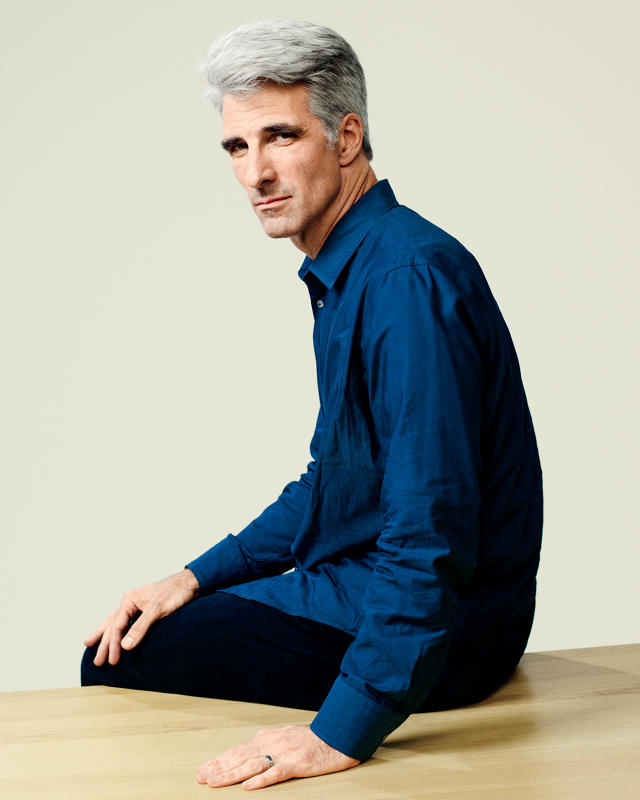
One of the most underappreciated realities about Apple is that it has always been a company that learns on the fly. "I've always thought there are a number of things that you have achieved at the end of a project," Jony Ive told me and Brent Schlender in 2014 when we interviewed him for our biography Becoming Steve Jobs. "There's the object, the actual product itself, and then there's all that you learned. What you learned is as tangible as the product itself, but much more valuable, because that's your future."
This continual learning process is central to the way Cook manages Apple. He accepts the inevitability of flaws, but relentlessly insists that employees pursue perfection. "I twitch less," says Cue cheerfully when I ask about the difference between Jobs and Cook. "No, no, no, just kidding! Steve was in your face, screaming, and Tim is more quiet, more cerebral in his approach. When you disappoint Tim, even though he isn't screaming at you, you get the same feeling. I never wanted to disappoint Steve, and I never want to disappoint Tim. [Other than them,] I have that feeling with, like, my dad."
Perhaps the best example of this continuous improvement at work under Cook is the company's rehabilitation of its Maps app, which was universally scorned after its introduction in September 2012. Apple Maps' miscues were legion: Bridges seemed to plunge into rivers; hospitals were located at addresses actually belonging to shopping centers; directions were so bad they confused airport runways with roads. Apple didn't have a billion customers at the time, but it had more than enough to turn the app into a national joke. "Look, the first thing is that you're embarrassed," says Cue. "Let's just deal with that one fact of emotion. These things mean a lot to us, we work really hard, and so you're embarrassed. We had completely underestimated the product, the complexity of it. All the roads are known, come on! All the restaurants are known, there's Yelp and OpenTable, they have all the addresses. The mail arrives. FedEx arrives. You know, how hard is this?"
Cue, left leg jittering under the table, recounts how Apple regrouped after the mess. "What it causes you to do first is ask, How important is this? Is this a place where we need to triple or quadruple down, or did we make that mistake because the product's not that important to us? We had long discussions at the ET [executive team] level about the importance of Maps, where we thought it was going in the future, and could we treat it as a third-party app? We don't do every app. We're not trying to create a Facebook app. They do a great job. We decided that Maps is integral to our whole platform. There were so many features that we wanted to build that are dependent on that technology, and we couldn't see ourselves being in a position where that was something that we didn't own."
The changes didn't come easy. Shortly after the app's debut, Scott Forstall, a 15-year Apple veteran who was in charge of its development, was eased out. That was just the beginning. Forstall had overseen dozens of people working in relative isolation: Several thousand people now work on Maps. "We needed to develop competencies that we initially didn't appreciate," says Federighi, who looks like a cross between Sam Waterston and Anthony Perkins, with the silver hair and aircraft-carrier black eyebrows that have led Apple fandom to dub him "Hair Force One." "Maps presents huge issues relating to data integration and data quality, things we would need to do on an ongoing basis."
But the company did more than just throw numbers at the problem. Cook also forced his execs to re-examine, and change, the way they worked with development teams. Famous for being secretive, Apple opened up a bit. "We made significant changes to all of our development processes because of it," says Cue, who now oversees Maps. "To all of us living in Cupertino, the maps for here were pretty darn good. Right? So [the problem] wasn't obvious to us. We were never able to take it out to a large number of users to get that feedback. Now we do."
Apple now does public beta testing of its most significant software projects, something that Jobs never liked to do. In 2014, the company asked users to test run its Yosemite upgrade to OS X. Last year, it introduced beta testing of iOS, which is the company's most important operating system. "The reason you as a customer are going to be able to test iOS," Cue says, "is because of Maps."
Maps' critical notices have gotten markedly better, and although the most prominent tech reviewers still prefer Google, everyone acknowledges Apple Maps' vast improvement. (It's also far more popular on iOS than Google Maps.) But the enhancements that Cue and crew have driven affect more than the app alone. Maps is now integrated into many popular iOS apps, including Airbnb, Foursquare, Yelp, and Zillow. Improving a platform like Maps creates benefits for the ecosystems that sit atop Apple's products. "Maps is this core organizing structure for the physical world in which you interact," explains Federighi. "The map is a foundation for building all kinds of value on the platform, just as our operating systems are a foundation."
The duo won't discuss what's next for Maps, though many features are likely to involve giving the service more artificial intelligence than it already has. (Maps directing you to a different route from the one it first recommended is an example of basic AI at work.) Cue offers an example of something he'd like to see. "Let's say I'm at home doing email before work," he says. "I'd like Maps to tell me, 'Don't leave now. Your commute will be cut by 15 minutes if you stay home for a while.' That would be very helpful."
What Apple has accomplished with Maps is an example of the kind of grind-it-out innovation that's happening all the time at the company. You don't hear a lot about it, perhaps because it doesn't support the enthralling myth that innovation comes in blinding flashes that lead to hitherto unimaginable products. When critics ding Apple for its failure to introduce "breakthrough" devices and services, they are missing three key facts about technology: First, that breakthrough moments are unpredictable outcomes of ongoing, incremental innovation; second, that ongoing, behind-the-scenes innovation brings significant benefits, even if it fails to create singular disruptions; and, third, that new technologies only connect broadly when a mainstream audience is ready and has a compelling need. "The world thinks we delivered [a breakthrough] every year while Steve was here," says Cue. "Those products were developed over a long period of time."
Over the past year, artificial intelligence—broadly defined as the capability for machines to "think" for us by crunching loads of data—has become one of those technologies that capture the public's imagination, and all the action seems to be taking place somewhere other than Cupertino. At its recent IO conference, Google promised to reshape several of its products around AI, a move that has been hailed as visionary. The hottest consumer product with AI features doesn't even come from Apple—it's Amazon's Echo, with its hint of a world in which computing simply surrounds us. Who needs handheld devices when you can just ask questions of the air and have the furniture bark back answers?
A closer look, however, reveals that Apple's development of its most consumer-oriented AI service, Siri, is very much in keeping with the company's distinct and widely misunderstood approach to deploying new technology. Apple has been using various kinds of AI for years, for things like the personal recommendations available via iTunes since 2003. Siri was introduced in late 2011, nine months before Google Now and three years before Microsoft's Cortana and Amazon's Alexa.
Apple relies on a simple, two-pronged approach to develop Siri. It's one that makes clear why Apple doesn't worry about who's ahead or behind. What matters to company executives is how successfully Apple steers its own ever-improving product to customers.
First, the company works constantly to improve the underlying technology. As with Maps, Siri is the beneficiary of Apple's treatment of it as a continually updated online service rather than something refreshed only with a major OS upgrade. Customers have caught up to the fact that Siri can successfully answer a wider variety of questions: It now handles 2 billion queries a week, double what it did a year ago.
Second, Apple regularly seeks out new places where Siri can help those customers. On an iPhone, Siri handles voice commands and questions by tapping into apps and pulling out answers. In cars equipped with Apple's CarPlay dashboard-display system, it will recommend travel routes, find restaurants, and perform other functions. You can use Siri with an Apple Watch (presuming you haven't socked yours away in a drawer). You can also use it to control your television via the Apple TV remote.
Unlike Maps, Siri isn't replacing a real-world analogue. So, Cue says, "you're trying to determine what are the features, what are the ways it can work really well, what are customers looking for, and what are the things you can do that are going to improve their lives." Cue's thinking explains, in part, why Apple opened Siri up to app developers this summer, though only in seven categories: fitness, messaging, payments, photos, ride hailing, CarPlay, and voice calling. Let Siri shine where she'll be most valuable to users.
For now, Siri is as good as anything that's out there. Using one's voice to control Now is fun some days and frustrating on others, and reviewers say Cortana can be equally inconsistent. Alexa, the digital assistant within Echo, is to be applauded for the speedy way it answers many queries, but my son often shouts at it in exasperation. Alexa can also be used with the Amazon Fire TV Stick to control a TV, but it's not in cars.
If AI is becoming desirable to mainstream customers, Apple, the company that is supposedly so far behind, is better positioned than anyone to take advantage of an AI moment. None of its competitors offer both a wide range of products and a history of delivering great consumer experiences. Apple can put Siri to work in all kinds of existing services and products. Customers will see the impact this fall, when they'll be able to use Siri on their Macs. They will also discover more AI features in the Photos app, making it easier to manipulate and organize their pictures. Drivers with CarPlay are likely to see more AI in automobiles as well. Lacking such an extensive product ecosystem, Apple's competitors have less appealing choices: They must limit their use of AI, invent brand-new products built around the technology (as Amazon did with Echo), or rely on partners to incorporate the technology in third-party products.
Apple will occasionally push its customers past their comfort zone, as it might this fall if the iPhone 7 removes the headphone jack. But it never forces the bleeding edge on its customers. In late 2015, it quietly acquired a voice-AI startup called VocalIQ that is reputedly working on the next-generation Siri, but you can be sure that its technology will only find its way into devices when Apple believes it is truly ready. Artificial intelligence is an alluring concept—machines that think for us!—but it also could have unforeseen ramifications. Apple gives its billion customers comfortable doses of AI, because, despite the common misconception, it isn't a company for geeks.
"People like things they can do now, not just think about," Cook says. "I've been thinking about The Jetsons since I was a kid. But occasionally you want The Jetsons to come to reality. That's what Apple is so great at: Productizing things and bringing them to you, so you can be a part of it."
In the mid-1970s, when reruns of The Jetsons were still a staple of Saturday morning TV, Steve Jobs and Steve Wozniak started Apple Computer with the goal of selling a new kind of machine to an audience they measured in the hundreds. As the company grew, its mission broadened. When Jobs returned in 1997, he would tout the fact that Apple sold an "experience" that could not be matched by other manufacturers. At first, the experience was one of using a single computer in which the company's software and hardware was seamlessly meshed. Jobs hoped that the excellence of Apple's personal computers might bring in an additional 1% market share, an increase that would have stabilized Apple's financial health. By the time Tim Cook became CEO, this concept of an "Apple experience" had grown to mean owning and using a collection of three Apple devices (iPad, iPhone, and Mac) networked to one another and the Internet.
The experience now being sold by Apple has expanded far beyond that. As Cue says, grinning at the ambition: "We want to be there from when you wake up till when you decide to go to sleep." Cook himself is only slightly less brash. "Our strategy is to help you in every part of your life that we can," he says, "whether you're sitting in the living room, on your desktop, on your phone, or in your car."
It's impossible to understand Apple's future, and Cook's challenge, without acknowledging that the experience Apple sells today is not just a collection of devices, but a web of hardware, software, and services that is itself connected to other webs of apps and services made primarily by other companies. These other webs include everything from the "app economy," which already runs on Apple software and devices, to emerging ones such as the connected home and car as well as wearable computing. To achieve its goal of serving its customers all day long, Apple must do more than ensure that its own products work brilliantly—it also must attempt to make them work seamlessly with these many other disparate networks. It must be a notable, reliable player in ecosystems that it doesn't own itself.
Apple does an extraordinary job of extracting revenue from the worlds in which it already plays a role, and its future revenues will depend on this even more. Horace Dediu, an influential analyst now working with the Clayton Christensen Institute for Disruptive Innovation in Boston, estimates that Apple customers deliver an astronomical $40 per month apiece to the company, versus the pennies per month that Facebook and Google collect, and the few dollars a month that Amazon receives. That's primarily a result of the expensive devices its consumers are buying. But subscription services such as Apple Music and iCloud storage are starting to deliver significant cash. Revenue from services now accounts for 12% of Apple's total sales, up from 9% the year before. In fact, Apple's services revenue exceeds Facebook's total revenue. And Cook says the company has just gotten started. "Oh, yeah. I expect it to be huge," he says, smiling, his Alabama drawl becoming more pronounced as he delivers the good news.
The iPhone's sales may have dipped for a quarter, but it is far from dead. Its ability to interact with other products is a strategic advantage, and it remains central to what analyst Neil Cybart already calls the "Apple Experience Era." "Your auto or your home may have dozens of microprocessors in them, but they're dumb products," says Dediu. "When the smartphone enters that environment, it gets integrated, and the vehicle [or the home] gets intelligent." Your iPhone is loaded with your personal preferences, as well as the latest software for managing the world around you, like apps for your thermostat and Philips Hue lightbulbs. Think of the way iPhone automatically connects via Bluetooth to your car's sound system, and you can start to imagine the role it could play as consumers accumulate more sensor-embedded devices.
The iPhone will continue to morph, in ways designed to ensure its place as the primary way we interact with and manage our technological experience for the foreseeable future. Apple will sell more devices, but its evolution will also enable it to explore new revenue opportunities. This is how Apple adapts. It expands its portfolio by building on the foundation laid by earlier products. That steady growth has made it broader and more powerful than any other consumer technology company.
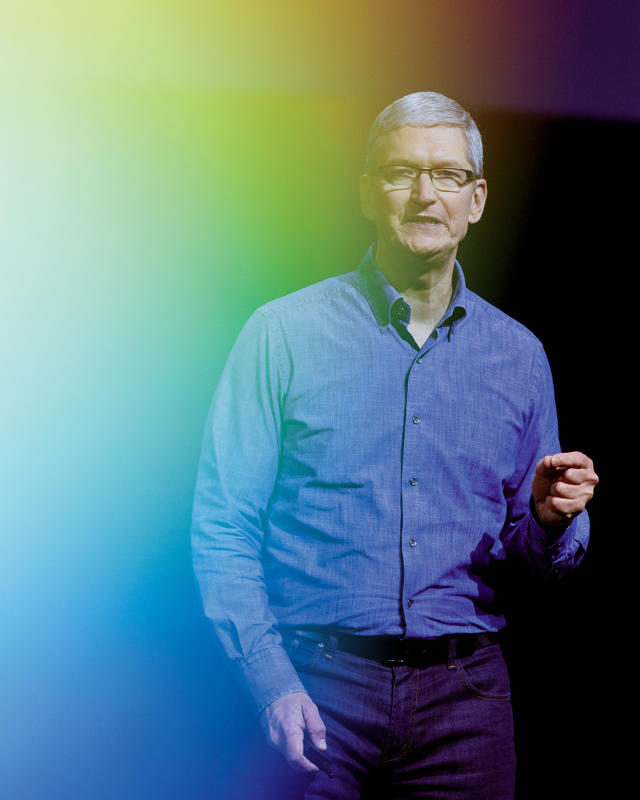
It's entirely possible that Apple will never introduce a product as universally desired as the iPhone. That doesn't mean it won't continue to be a great company. "The iPhone entered a market that was the biggest on earth for electronic devices," Cooks tells me, as we're wrapping up our interview. "Why is that? It's because eventually, everyone in the world will have one. There are not too many things like that."
Then Cook makes another one of his points that can get lost if you don't understand the care he takes with every word. "It's hard to imagine a market defined in units—not revenues—that's that big."
In terms of unit sales, yes, there may never be another iPhone. But in terms of revenue, well, look at the industries that Apple is just now entering, or is rumored to be pursuing. Media and entertainment is a $550 billion global market. Global car ownership is a $3.5 trillion business. Annual global health spending is more than $9 trillion. And while Apple may not currently dominate any of these arenas, remember that analysts once thought Apple would have a hit on its hands if it could garner 1% of the mobile phone business.
As we're saying our goodbyes, Cook and I stumble into discussing health care, and he perks up again. "We've gotten into the health arena and we started looking at wellness, that took us to pulling a string to thinking about research, pulling that string a little further took us to some patient-care stuff, and that pulled a string that's taking us into some other stuff," he says. "When you look at most of the solutions, whether it's devices, or things coming up out of Big Pharma, first and foremost, they are done to get the reimbursement [from an insurance provider]. Not thinking about what helps the patient. So if you don't care about reimbursement, which we have the privilege of doing, that may even make the smartphone market look small."
One percent of $9 trillion is $90 billion. Even Apple might call that a pretty good business.
